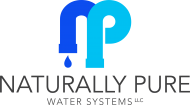Municipal Water
Because water is so crucial to our life and health, it is important that we know exactly what’s in our tap water. The truth is that a glass of tap water often contains a dose of agricultural or industrial contaminants that have been linked to cancer, brain and nervous system damage. Just because your tap water gets a passing grade from the government doesn’t always mean it is safe. Most utilities are in compliance with EPA guidelines, but their water still often contains contaminants in concentrations exceeding the levels that scientists say pose health risks. Because the EPA has not added a new chemical to the list of regulated contaminants in 20 years, more than half of the contaminants detected in tap water had no regulatory limit at all, meaning they could legally be present at any concentration and utilities don’t have to test for them or tell their customers about them. In addition to what toxins are already found in their water, utilities are required to kill the bacteria by injecting chlorine. Recently these utilities announced that in their continuing effort to improve water quality they would be adding chloramine (chlorine & ammonia) instead of chlorine as a disinfectant . The truth behind this change is that chlorine by itself produces a disinfectant byproduct known as Trihalomethanes, which has been linked to several types of cancer as well as birth defects. So now you know that your tap water not only contains all those contaminants that are within “safe limits” but also has chlorine, ammonia and fluoride being added.
Bottled Water
The following 5 reasons are why bottled water is not a good choice.
 1. The Quality
1. The Quality
Unlike your local tap water which is regulated by the EPA, utilities are required to test for contaminants each year and disclose the results to the public, the bottled water industry is regulated by the FDA which allows for less frequent testing and doesn’t monitor some contaminants and doesn’t require bottlers provide water quality reports to consumers. In fact in May 2018 Consumer Reports discovered through a freedom of act that the FDA discovered that Spring Valley Water Company had distributed numerous quantities of bottled water contaminated with E Coli after it was warned to cease .
2. The Cost
According to the EPA, tap water costs about $.002 per gallon- that’s two tenths of a penny- whereas a liter of water cost about a dollar before tax. That means you’re paying 2000 times more for bottled water
3. The Bottle itself
It’s bad enough that the bottle water your drinking might be contaminated. But the bottle itself could be adding to the problem by leaching additional contaminants into your water.
4. The Trash
EPA statistics show that less than 32 % of plastic bottles are recycled, which means that the other 68% was left to clog landfills, harm wildlife and pollute waterways. In fact, the marine conservation organization “Oceana” estimates that up to 20 million tons of plastic end up in our oceans each year.
5. Wasted Energy
Trash is the only environmental problem caused by water bottles, Analysis by the Pacific Institute, a global water think tank, found that it takes up to 2000 times more energy to produce bottle water than tap water. It takes energy to make the bottles, fill them with water and ship them to your local store.
What Can You Do?
There is a simple alternative to bottled water: buy a stainless steel thermos, and use it. Install a reverse osmosis system which filters out on average 98.8 % of the impurities, both human and natural which are in your water. The total cost is only a fraction of bottled water’s cost within a year’s time and you are assured that you are drinking pure water and not contributing to polluting the planet.

